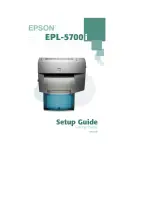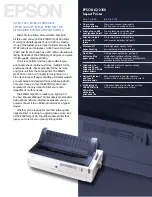
Specifying input parameters
Using LCDS Print Description Language
2-49
Example 5
Job 4 overrides the system level SEFFNT mapping with a job
level definition.
TCODE command
The TCODE command defines a set of input–character–to–type
assignments that will be used for the masked string comparisons
in a report. You must use TCODE whenever you need to modify
one of the standard sets of default type assignments.
General rules for
using the TCODE
command
The TCODE command should be coded as follows:
•
Use a command identifier of the type
ac
for the TCODE
command within a JSL. The
ac
identifier consists of 1 to 6
alphanumeric characters (A through Z and 0 through 9). One
of these characters must be alphabetic.
•
Use the DEFAULT parameter to specify the initial type
assignments for the entire set of input character codes.
•
Use one or more occurrences of the TASSIGN parameter to
modify the specified initial set of type assignments by
associating specific character types with specific characters
in the input character set.
•
If necessary, use one or more occurrences of the TRESET
parameter to further modify the initial set by disassociating
specific character types from specific characters in the input
character set.
•
Use a hyphen (-) to specify a range of contiguous characters
where the contiguity is based on actual codes.
•
Specify input codes in their untranslated form.
For example, for input data encoded generally in ASCII, use
the ASCII string constant type or the hexadecimal equivalent.
(For example, for A, use the ASCII A’a’ or the hex equivalent
X’61’. Do not use ‘a’ in this case.)
•
For input codes associated with EBCDIC characters, be
aware that the contiguity of the input codes is interrupted
between the letters I and J, and between the letters R and S.
This break requires you to specify three separate ranges.
•
Use the TASSIGN parameters to define additional character
sets.
JOB4: JOB;
SEFFNT
SEFMAP=(L01BOB,P0812A);
Summary of Contents for Docuprint 75
Page 16: ...Table of contents xvi Using LCDS Print Description Language ...
Page 26: ...Introduction xxvi Using LCDS Print Description Language ...
Page 108: ...PDL principles and procedures 1 82 Using LCDS Print Description Language ...
Page 354: ...Specifying print format parameters 4 114 Using LCDS Print Description Language ...
Page 436: ...Using PDL commands for graphics 6 8 Using LCDS Print Description Language ...
Page 452: ...PDL command and DJDE summary A 16 Using LCDS Print Description Language ...
Page 470: ...Character code assignments C 8 Using LCDS Print Description Language ...
Page 478: ...Offline specifications D 8 Using LCDS Print Description Language ...
Page 506: ...INDEX INDEX 12 Using LCDS Print Description Language ...
















































